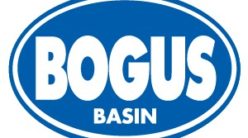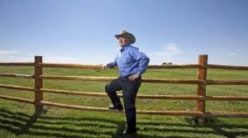By Cynthia Sewell
Back in 1996, Boise’s bus service, then called Boise Urban Stages, received a national award from the American Public Transit Association for being an outstanding transit system with 50 or fewer buses.
A 56 percent increase in ridership over three years helped propel BUS to that honor: Ridership on the 36-bus system increased from 847,000 in 1993 to 1.32 million in 1995.
In the subsequent two decades, Boise’s population grew 37 percent, from 159,258 in 1995 to 218,821 in 2015. But its bus ridership fell 7 percent — from that all-time high to 1.23 million in 2015.
Nationally, public transportation ridership grew 39 percent in that period, almost twice the rate of population growth, according to the American Public Transportation Association.
So with Boise’s marked growth, why hasn’t bus ridership grown?
Passenger Mike Levy’s experience suggests one possible reason. ValleyRide is Levy’s primary form of transportation. Levy, who lives and works in Boise, rides the bus to work in the morning. But when it is time to go home, he is stranded.
“I get off work at 9 p.m. There is no service,” said Levy, a member of the Facebook group Boise Bus Riders, while waiting for a bus at the new Downtown transit center one morning last week.
To get home, he rides with a friend or takes a taxi.
The Statesman asked its Facebook followers what they like and do not like about Boise’s bus service. Most said they want more routes and more hours of service.
Josh McDannel, of Boise, said he would ride the bus “if there was a reasonable option. Best route is 1 hour, 43 minutes and it doesn’t even get me to work on time. I’ll stick with my 12-minute drive.”
On a recent weekday morning at Downtown Boise’s new Main Street Station, buses rolled in and out of the underground facility. Of the dozen or so buses the Statesman observed in about two hours, none was even half full.
Typically, half a dozen people would get off and on each bus. Riders reflected a wide diversity of ages and ethnicities. Some loaded bicycles onto racks on the front of the buses.
A 2014 survey of 857 Ada County riders showed that almost half were 34 or younger, 51 percent earned less than $20,000 annually and 40 percent depended on the bus for all their transportation needs. More than four-fifths said they were satisfied or very satisfied with the service.
But that service, ValleyRide, operates only until about 7 p.m. weekdays (except for two routes that run until 10 p.m.), with even more limited service on Saturday and no service on Sundays.
“We know we can increase ridership by providing more service, but our system has not grown,” said spokesman Mark Carnopis. “Current service levels are close to the 2005 service levels.”
ValleyRide knows its limitations.
“To attract riders, a transit system must be convenient, easy to use and offer frequencies of service that will serve the changing needs of the public,” Carnopis said.
One of those needs is a result of the end of banker’s hours. With more people working nontraditional hours, the 9-to-5 workday is fading. That means public transit needs to offer longer hours, something ValleyRide has not been able to do.
In 2008, ValleyRide stopped letting riders flag down buses and required them to catch rides at fixed stops. That improved scheduling but the improvement in ridership was minor, Carnopis said.
In 2015, ValleyRide extended service hours until 10 p.m. on two of its 18 routes: Route 7 Fairview Avenue and Route 9 State Street. That brought significant results: In one year, ridership grew 15 percent on the Fairview route and 10 percent on the State route. Meanwhile, overall Ada County ridership fell 1 percent.
So why doesn’t ValleyRide start offering more routes and expand service hours to include nights and weekends?
Money.
“Our funding has not kept pace with growth in population,” Carnopis said.
Valley Regional Transit, which operates ValleyRide, relies primarily on federal aid and voluntary contributions from the eight cities and two counties it serves . In fiscal year 2015, VRT received $11.3 million, 53 percent of it revenue, from the federal government, and $8.8 million, or 41 percent, from local governments.
The remaining 6 percent came from fares, advertising and other sources. ValleyRide charges $1 per ride on local routes.
How other states do it
State transportation departments provide money for public transit in 45 states, including Idaho, although just barely — and ValleyRide did not receive any money from the state.
The Idaho Transportation Department put just $312,000 toward public transportation in 2014 — 19 cents per capita, the lowest of those 45 states, according to a report by the American Association of Highway and Transportation Officials. In comparison, Washington spent $7.50 per capita, Oregon $8.23; Wyoming $4.32 and Montana 37 cents.
Nevada and Utah do not fund public transportation, but Utah lets counties levy sales taxes up to one-quarter of 1 percent for transit and roads. The Utah Transit Authority, which serves the Salt Lake area, received 71 percent of its funding from the sales tax in 2015.
Oregon permits local payroll taxes for transit, and Portland’s and Eugene’s transit districts levy them.
For years, some state, county, city and business leaders pressed the Idaho Legislature to give local governments the authority to ask voters to approve sales taxes for transportation. Year after year, the proposal went nowhere. Lawmakers resisted tax increases and worried that local agencies might abuse the authority.
More tax money can bring more riders. Consider the Spokane Transit Authority, which has 36 fixed routes — twice as many as ValleyRide — and operates from 5 a.m. to 11 p.m. weekdays, 6 a.m. to 10 p.m. Saturdays and 8 a.m. to 8 p.m. Sundays. It had 10.8 million riders in 2015, almost nine times as many as ValleyRide, though the cities are about the same size.
“Take a look at recent election results in Spokane to understand how voters can have an impact in growing a transit system,” Carnopis said.
Last fall, Spokane voters approved raising the sales tax one-tenth of 1 percent this April 1 and again on April 1, 2019. The estimated $200 million raised through 2028 will be used to expand hours, add runs, provide more weekend service, and build more park-and-ride facilities and transit stations, Carnopis said. The expansion is expected to add 500,000 rides per year.
Meanwhile, ValleyRide remains stuck.
“They are doing what they can,” said Boise city spokesman Mike Journee.
“We are in a situation where we have two strikes against us. The system we have is not able to put transportation dollars toward things other than highway lanes, and we do not have those tools that other communities do to specifically fund public transit.”
Many of the people who ride ValleyRide do so because they have no choice — they cannot afford a car or cannot drive, Journee said. And many who drive their cars everywhere do so because they have no choice, either: Buses are not available when and where they need them.
“We have got to give people real choices,” Journee said. “Money is needed to provide choices for people.”




